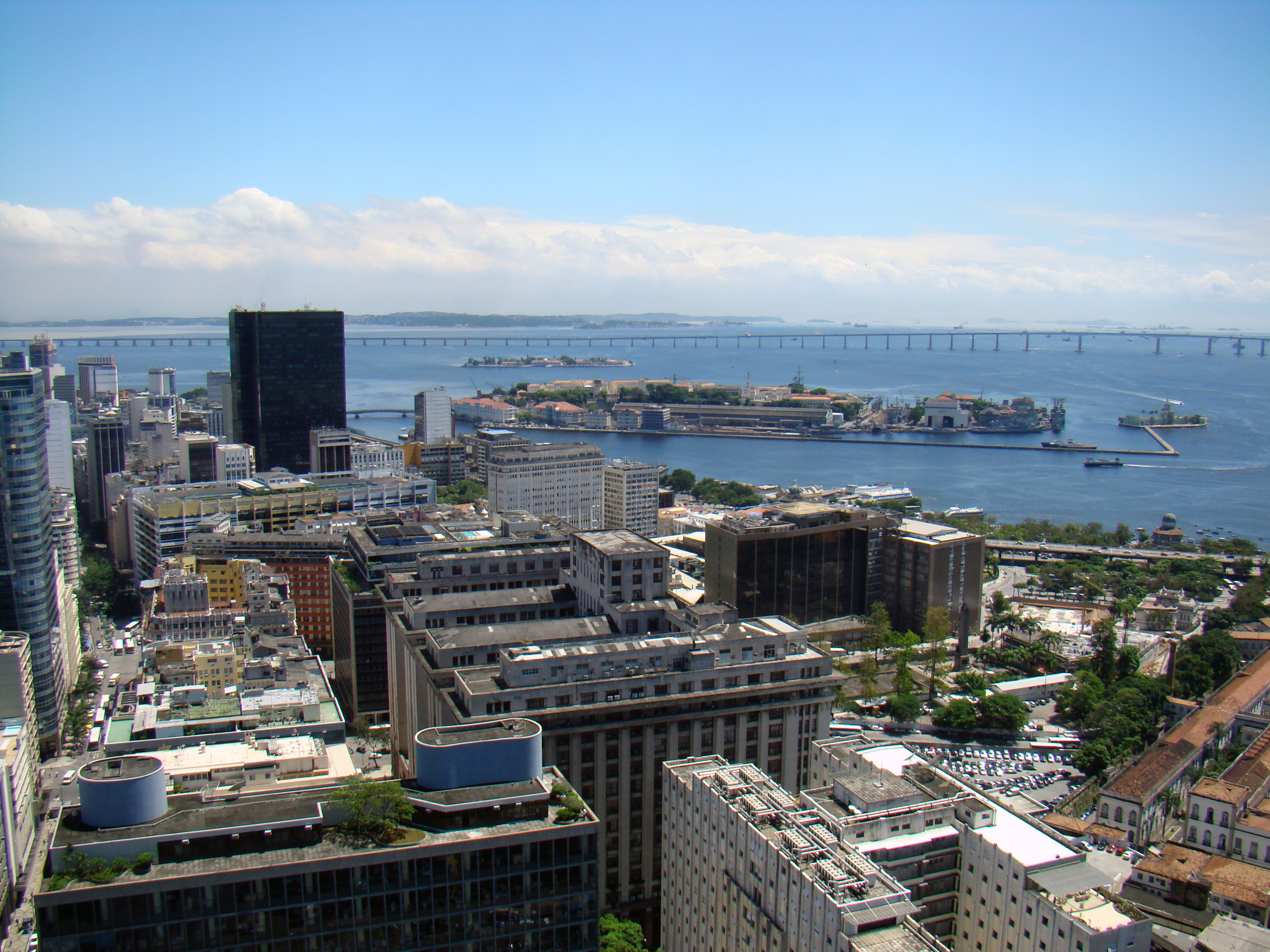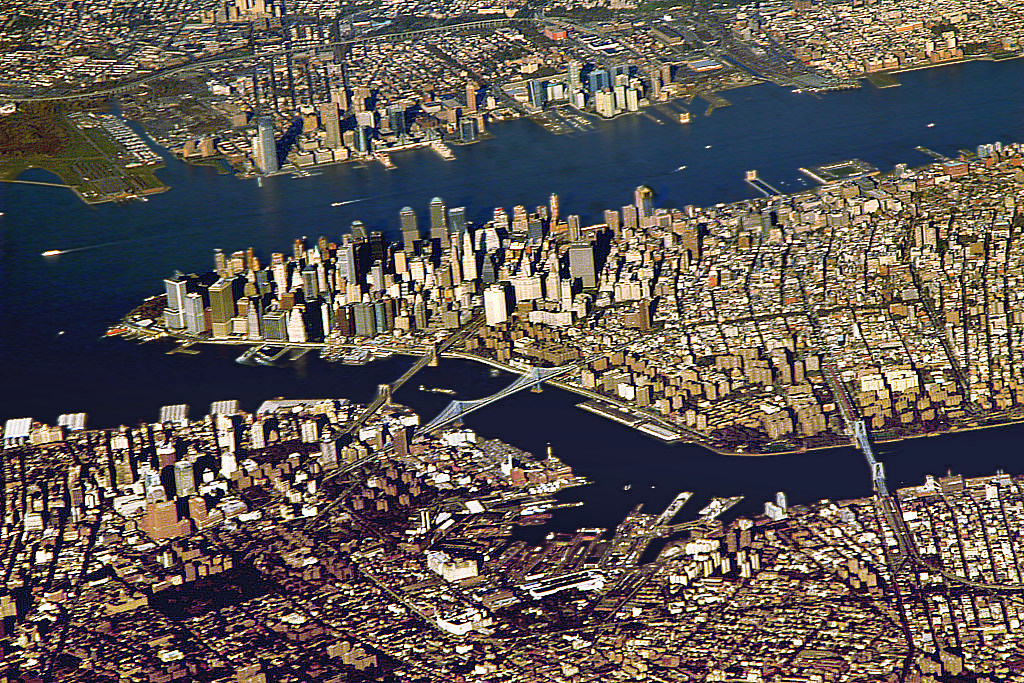|
Itaguaí
Itaguaí () is a municipality located in the Brazilian state of Rio de Janeiro and contains several important iron ore loading ports of the world including Ilha Guaiba. Its population was 134,819 in 2020 and its area is 273 km2. The city was founded in 1688 and lies midway between Rio de Janeiro and Angra dos Reis. Itaguaí is located approximately 75 km west of the city of Rio de Janeiro on the road to Santos (SP). It is located between the shore of Sepetiba Bay and the Atlantic Rainforest. Itaguai and the region around it contain some of the largest ore exporting ports in Brazil. It also serves also as dormitory town for workers of the industrial western zone (Zona Oeste) of Rio de Janeiro. It is the seat of the Roman Catholic Diocese of Itaguaí. Port of Itaguai (Sepetiba / Guaiba island) The Port of Itaguai was opened as a deepwater port in 1982, primarily to export alumina and other minerals found in the Minas Gerais region. It includes ports of Itaguai, ... [...More Info...] [...Related Items...] OR: [Wikipedia] [Google] [Baidu] |
Roman Catholic Diocese Of Itaguaí
The Roman Catholic Diocese of Itaguaí ( la, Dioecesis Itaguaiensis) is a diocese located in the city of Itaguaí in the Ecclesiastical province of São Sebastião do Rio de Janeiro in Brazil. History * 14 March 1980: Established as Diocese of Itaguaí from the Diocese of Barra do Piraí–Volta Redonda and Diocese of Nova Iguaçu Leadership * Bishops of Itaguaí (Roman rite) ** Bishop Vital João Geraldo Wilderink, O. Carm. , image = , caption = Coat of arms of the Carmelites , abbreviation = OCarm , formation = Late 12th century , founder = Early hermits of Mount Carmel , founding_location = Mount Ca ... (1980.04.21 – 1998.07.08) ** Bishop José Ubiratan Lopes, O.F.M. Cap. (1999.11.17 – present) References GCatholic.org Roman Catholic dioceses in Brazil Christian organizations established in 1980 Itaguaí, Roman Catholic Diocese of Roman Catholic dioceses and prelatures established in the 20 ... [...More Info...] [...Related Items...] OR: [Wikipedia] [Google] [Baidu] |
Rio De Janeiro (state)
Rio de Janeiro () is one of the 27 federative units of Brazil. It has the second largest economy of Brazil, with the largest being that of the state of São Paulo. The state, which has 8.2% of the Brazilian population, is responsible for 9.2% of the Brazilian GDP. The state of Rio de Janeiro is located within the Brazilian geopolitical region classified as the Southeast (assigned by IBGE). Rio de Janeiro shares borders with all the other states in the same Southeast macroregion: Minas Gerais ( N and NW), Espírito Santo ( NE) and São Paulo ( SW). It is bounded on the east and south by the South Atlantic Ocean. Rio de Janeiro has an area of . Its capital is the city of Rio de Janeiro, which was the capital of the Portuguese Colony of Brazil from 1763 to 1815, of the following United Kingdom of Portugal, Brazil and the Algarves from 1815 to 1822, and of later independent Brazil as a kingdom and republic from 1822 to 1960. The state's 22 largest cities are Rio de Janeiro, ... [...More Info...] [...Related Items...] OR: [Wikipedia] [Google] [Baidu] |
Rio De Janeiro
Rio de Janeiro ( , , ; literally 'River of January'), or simply Rio, is the capital of the Rio de Janeiro (state), state of the same name, Brazil's List of Brazilian states by population, third-most populous state, and the List of largest cities in Brazil, second-most populous city in Brazil, after São Paulo. Listed by the Globalization and World Cities Research Network, GaWC as a global city, beta global city, Rio de Janeiro is the Largest cities in the Americas, sixth-most populous city in the Americas. Part of the city has been designated as a World Heritage Site, named "Rio de Janeiro: Carioca Landscapes between the Mountain and the Sea", on 1 July 2012 as a Cultural Landscape. Founded in 1565 by the Portuguese people, Portuguese, the city was initially the seat of the Captaincies of the Portuguese Empire, Captaincy of Rio de Janeiro, a domain of the Portuguese Empire. In 1763, it became the capital of the State of Brazil, a List of states of the Portuguese Empire, state o ... [...More Info...] [...Related Items...] OR: [Wikipedia] [Google] [Baidu] |
List Of Sovereign States
The following is a list providing an overview of sovereign states around the world with information on their status and recognition of their sovereignty. The 206 listed states can be divided into three categories based on membership within the United Nations System: 193 member states of the United Nations, UN member states, 2 United Nations General Assembly observers#Present non-member observers, UN General Assembly non-member observer states, and 11 other states. The ''sovereignty dispute'' column indicates states having undisputed sovereignty (188 states, of which there are 187 UN member states and 1 UN General Assembly non-member observer state), states having disputed sovereignty (16 states, of which there are 6 UN member states, 1 UN General Assembly non-member observer state, and 9 de facto states), and states having a political status of the Cook Islands and Niue, special political status (2 states, both in associated state, free association with New Zealand). Compi ... [...More Info...] [...Related Items...] OR: [Wikipedia] [Google] [Baidu] |
Ports
A port is a maritime facility comprising one or more wharves or loading areas, where ships load and discharge cargo and passengers. Although usually situated on a sea coast or estuary, ports can also be found far inland, such as Hamburg, Manchester and Duluth; these access the sea via rivers or canals. Because of their roles as ports of entry for immigrants as well as soldiers in wartime, many port cities have experienced dramatic multi-ethnic and multicultural changes throughout their histories. Ports are extremely important to the global economy; 70% of global merchandise trade by value passes through a port. For this reason, ports are also often densely populated settlements that provide the labor for processing and handling goods and related services for the ports. Today by far the greatest growth in port development is in Asia, the continent with some of the world's largest and busiest ports, such as Singapore and the Chinese ports of Shanghai and Ningbo-Zh ... [...More Info...] [...Related Items...] OR: [Wikipedia] [Google] [Baidu] |
Brumadinho
Brumadinho () is a Brazilian municipality in the state of Minas Gerais. The city belongs to the Belo Horizonte metropolitan mesoregion and to the microregion of Belo Horizonte. Brumadinho is at an altitude of 880 m. In 2020 the population was 40,666. The municipality is on the Paraopeba River. The Inhotim Museum of Contemporary Art, one of the most important art venues of Brazil, is in the city. The municipality contains part of the Serra do Rola-Moça State Park, created in 1994. History Brumadinho was settled in 1689. The Banda São Sebastião Musical Corporation, a symphonic band, was founded on May 13, 1929, by Tarcilio Gomes da Costa in Brumadinho. The municipality of Brumadinho itself was officially established on December 17, 1938. On January 25, 2019, the city was the victim of a tailings dam collapse that killed 270 people. The disaster released a mudflow that advanced over houses in a rural area near the city. See also * List of municipalities in Minas Gerais ... [...More Info...] [...Related Items...] OR: [Wikipedia] [Google] [Baidu] |
Vale (mining Company)
Vale S.A., formerly ''Companhia Vale do Rio Doce'' (the Sweet River Valley Company, referring to the Doce River) () is a Brazilian multinational corporation engaged in metals and mining and one of the largest logistics operators in Brazil. Vale is the largest producer of iron ore and nickel in the world. It also produces manganese, ferroalloys, copper, bauxite, potash, kaolin, and cobalt, currently operating nine hydroelectricity plants, and a large network of railroads, ships, and ports used to transport its products. The company has had two catastrophic tailings dam failures in Brazil: Mariana dam disaster, Mariana, in 2015, and Brumadinho dam disaster, Brumadinho, in 2019; the Brumadinho dam disaster caused the company to lose its license to operate eight tailings dams in Minas Gerais, and its stock to lose nearly 25 percent in value. [...More Info...] [...Related Items...] OR: [Wikipedia] [Google] [Baidu] |
Deadweight Tonnage
Deadweight tonnage (also known as deadweight; abbreviated to DWT, D.W.T., d.w.t., or dwt) or tons deadweight (DWT) is a measure of how much weight a ship can carry. It is the sum of the weights of cargo, fuel, fresh water, ballast water, provisions, passengers, and crew. DWT is often used to specify a ship's maximum permissible deadweight (i.e. when it is fully loaded so that its Plimsoll line is at water level), although it may also denote the actual DWT of a ship not loaded to capacity. Definition Deadweight tonnage is a measure of a vessel's weight carrying capacity, not including the empty weight of the ship. It is distinct from the displacement (weight of water displaced), which includes the ship's own weight, or the volumetric measures of gross tonnage or net tonnage (and the legacy measures gross register tonnage and net register tonnage). Deadweight tonnage was historically expressed in long tonsOne long ton (LT) is but is now usually given internationally i ... [...More Info...] [...Related Items...] OR: [Wikipedia] [Google] [Baidu] |
Sepetiba
Sepetiba is a neighborhood in the West Zone of Rio de Janeiro, Brazil, surrounded by Santa Cruz and Guaratiba, and by the Sepetiba Bay. It occupies an area of 1,162.13 ha, and has a population of 35,892 (according to Instituto Brasileiro de Geografia e Estatística, IBGE, 2000 demographic census). The origin of the name Sepetiba is the Tupi, which has the word "Sipitiba" as an alternative and ''çape-typa'' or ''çape-tyua'' as a corruption of the name, meaning Campo dos Sapés (''Sapé field'', in English), or Sapezal. Close to Sepetiba is the port of Sepetiba Terminal. The port handles containers and general bulk cargo Bulk cargo is commodity cargo that is transported unpackaged in large quantities. Description Bulk cargo refers to material in either liquid or granular, particulate form, as a mass of relatively small solids, such as petroleum/ crude oi .... Its maximum draft is 22.5m. References Neighbourhoods in Rio de Janeiro (city) Beaches of Rio de Ja ... [...More Info...] [...Related Items...] OR: [Wikipedia] [Google] [Baidu] |
Minas Gerais
Minas Gerais () is a state in Southeastern Brazil. It ranks as the second most populous, the third by gross domestic product (GDP), and the fourth largest by area in the country. The state's capital and largest city, Belo Horizonte (literally "Beautiful Horizon"), is a major urban and finance center in Latin America, and the sixth largest municipality in Brazil, after the cities of São Paulo, Rio de Janeiro, Salvador, Brasília and Fortaleza, but its metropolitan area is the third largest in Brazil with just over 5.8 million inhabitants, after those of São Paulo and Rio de Janeiro. Nine Brazilian presidents were born in Minas Gerais, the most of any state. The state has 10.1% of the Brazilian population and is responsible for 8.7% of the Brazilian GDP. With an area of —larger than Metropolitan France—it is the fourth most extensive state in Brazil. The main producer of coffee and milk in the country, Minas Gerais is known for its heritage of architecture and colonia ... [...More Info...] [...Related Items...] OR: [Wikipedia] [Google] [Baidu] |




